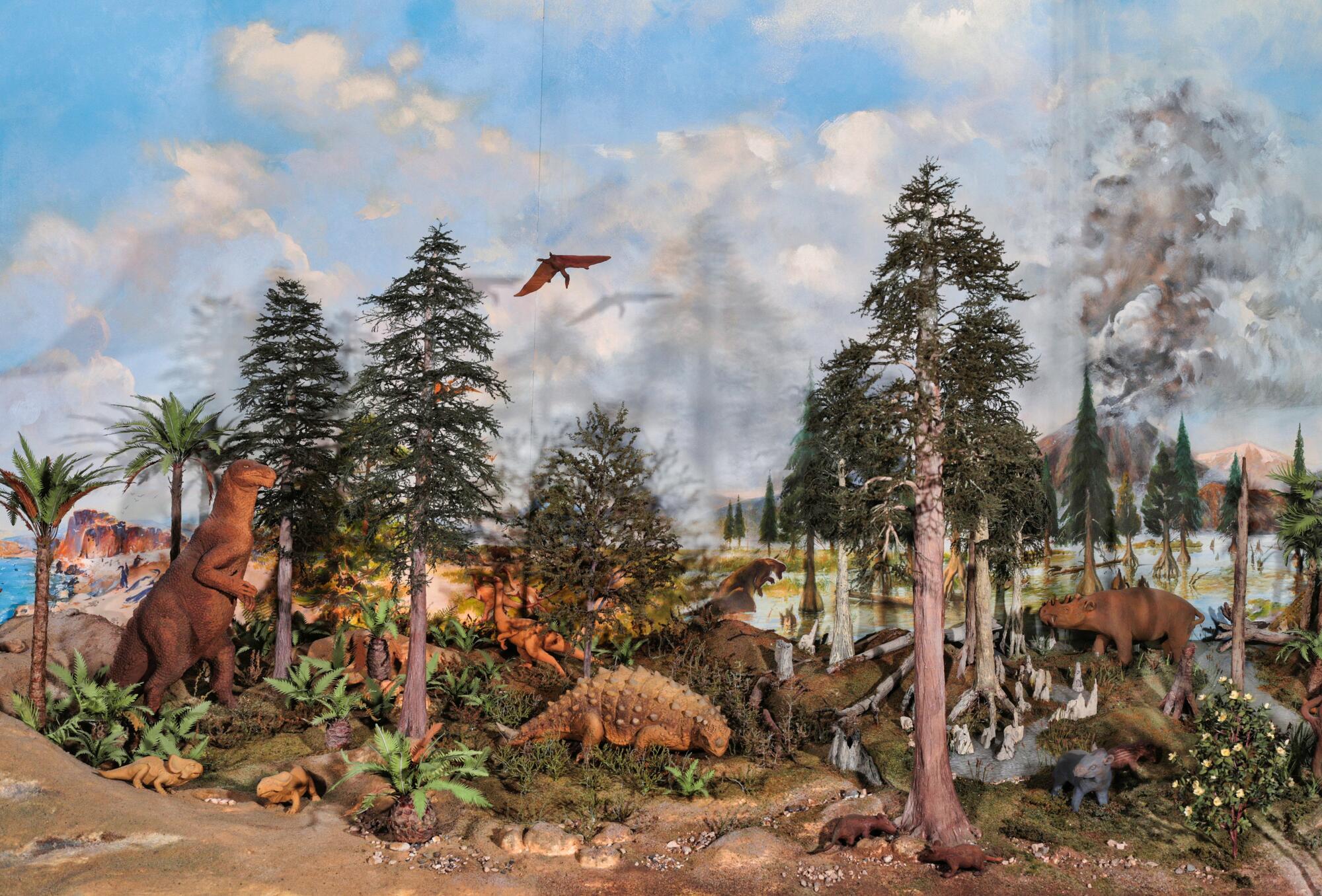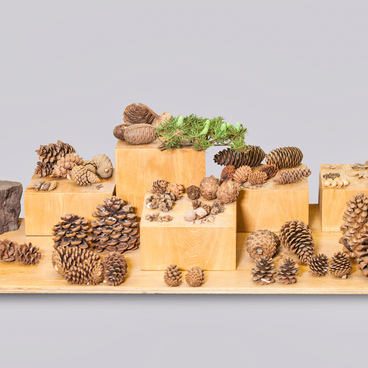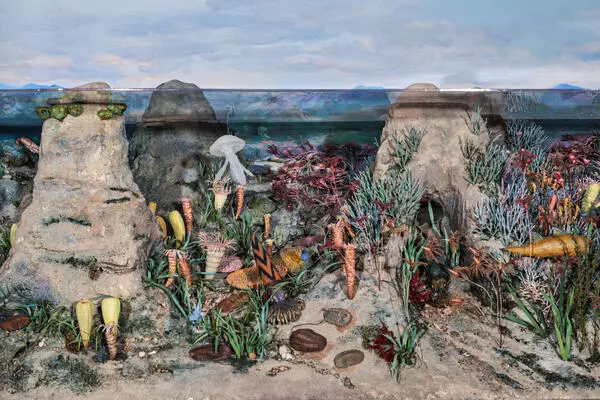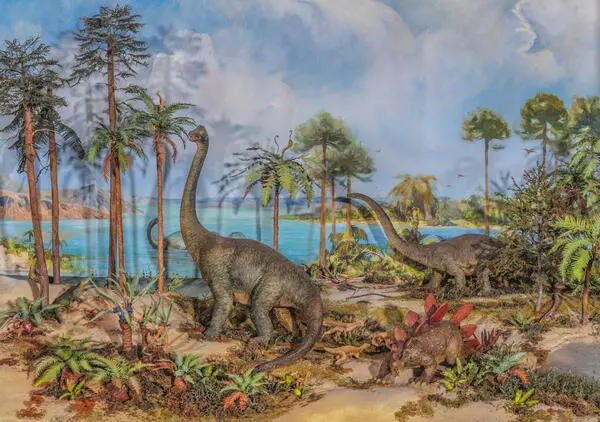The Cretaceous period began 145 million years ago. It owes its name to the chalk, a soft white limestone, the thick layers of which were accumulated at this time on the seabed. Flowering plants began to appear and develop during this period. That is the reason why the number of insects on the planet has significantly increased.
At that time, many invertebrates such as bryozoan corals, brachiopods, sea urchins, and cephalopods (ammonites and belemnites) lived in the sea.
Marine reptiles were widely spread. They included ichthyosaurs, plesiosaurs, pliosaurs, and mosasaurs, giant crocodile-like animals with limbs in the form of flippers and large heads. There was a new stage in the evolution of fish, especially bony ones. The first placental mammals also appeared in the Cretaceous period.
The era of prosperity began for dinosaurs. Their number and diversity drastically increased. Many unusual dinosaurs appeared, for example, herbivorous duck-billed hadrosaurs, to which saurolophus belongs. Their jaws worked as powerful as lawnmowers, and their teeth — about a thousand of them — were held together with special dental cement. The movable upper part of the hadrosaur allowed the teeth to slide from the tongue to the cheeks and back. No other animal had such a way of chewing.
Herds of herbivorous iguanodons, giant bipedal dinosaurs up to 10 meters tall, lived near the reservoirs. They had a powerful tail and massive hind limbs with claws. One of the unique features of iguanodons was the thorn on the forelimb thumb.
Another herbivorous dinosaur that lived in the Cretaceous period was Protoceratops. It reached about 1.8 meters in length and 60 centimeters in height but weighed as much as 180 kilograms. A distinctive feature of this dinosaur was the collar at the back of the skull. In 2011, scientists discovered a nest with the remains of 15 young protoceratops in Mongolia. This discovery suggested that the adult species took care of the young in the nests.
In the Late Cretaceous period, ornithomimids, omnivorous bipedal dinosaurs covered with feathers, lived on the territory of modern North America. Quick and sharp-sighted, they hunted insects, crustaceans, small lizards, and mammals at night. They also ate eggs, fruit, and leaves.
Pterosaurs hovered in the clouds above the seas, many of pterosaurs were lighter than nowadays birds. The weight of the largest huge pteranodon was only 20 kilograms with a wingspan of 8 meters. Pterosaurs spent almost all their time in flight and, like albatrosses, slept without going down.
The Cretaceous period, the last one of the Mesozoic era, ended 65 million years ago with the mass extinction of species. It was replaced by the Paleogene period of the Cenozoic era.
At that time, many invertebrates such as bryozoan corals, brachiopods, sea urchins, and cephalopods (ammonites and belemnites) lived in the sea.
Marine reptiles were widely spread. They included ichthyosaurs, plesiosaurs, pliosaurs, and mosasaurs, giant crocodile-like animals with limbs in the form of flippers and large heads. There was a new stage in the evolution of fish, especially bony ones. The first placental mammals also appeared in the Cretaceous period.
The era of prosperity began for dinosaurs. Their number and diversity drastically increased. Many unusual dinosaurs appeared, for example, herbivorous duck-billed hadrosaurs, to which saurolophus belongs. Their jaws worked as powerful as lawnmowers, and their teeth — about a thousand of them — were held together with special dental cement. The movable upper part of the hadrosaur allowed the teeth to slide from the tongue to the cheeks and back. No other animal had such a way of chewing.
Herds of herbivorous iguanodons, giant bipedal dinosaurs up to 10 meters tall, lived near the reservoirs. They had a powerful tail and massive hind limbs with claws. One of the unique features of iguanodons was the thorn on the forelimb thumb.
Another herbivorous dinosaur that lived in the Cretaceous period was Protoceratops. It reached about 1.8 meters in length and 60 centimeters in height but weighed as much as 180 kilograms. A distinctive feature of this dinosaur was the collar at the back of the skull. In 2011, scientists discovered a nest with the remains of 15 young protoceratops in Mongolia. This discovery suggested that the adult species took care of the young in the nests.
In the Late Cretaceous period, ornithomimids, omnivorous bipedal dinosaurs covered with feathers, lived on the territory of modern North America. Quick and sharp-sighted, they hunted insects, crustaceans, small lizards, and mammals at night. They also ate eggs, fruit, and leaves.
Pterosaurs hovered in the clouds above the seas, many of pterosaurs were lighter than nowadays birds. The weight of the largest huge pteranodon was only 20 kilograms with a wingspan of 8 meters. Pterosaurs spent almost all their time in flight and, like albatrosses, slept without going down.
The Cretaceous period, the last one of the Mesozoic era, ended 65 million years ago with the mass extinction of species. It was replaced by the Paleogene period of the Cenozoic era.






